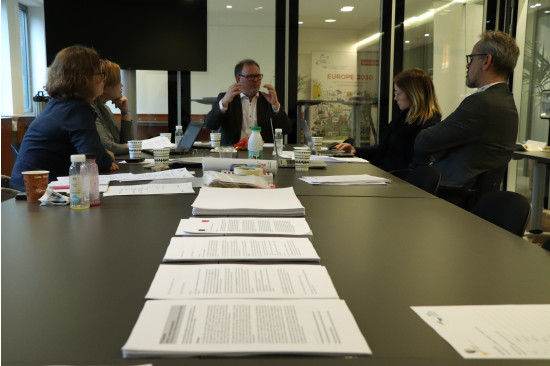Monitoring Process

Monitoring Process
Normally flagships comprise many projects of similar nature and involves larger budget outlays. However, flagships are not only projects, rather, they are strategic actions to respond particular macro-regional challenges. Flagships are formed by cooperation through relevant stakeholders from different levels of government. Achievement of the objectives of the Strategy is based on specific cooperation between these stakeholders. Therefore, monitoring and evaluation are playing a particularly important role when Flagship is implemented within a single Policy Area/Horizontal Action, or between PAs and/or HAs. (see more detailed: Link to the Flagship as a modus operandi: Concept and Guidelines for design document). Monitoring and evaluation is an essential component of flagships to make sure that the flagship is effectively and efficiently operated and managed. PACs/HACs can (re)consider monitoring and evaluation in terms of the different levels that the separate processes are taking place: strategic, thematic and process level. These levels require also distinct types of indicators, i.e. quantitative as well as qualitative, to communicate whole story of the PACs/HACs operations. This is utmost important to pave the way for working methods and cooperative structures among PACs/HACs. Finally, it is obvious that each of them demands an individual model for monitoring and evaluation. Monitoring and evaluation has to basically underline operations and activities by the EUSBSR (own activities) but also in relation to what is going on in the field of each PACs/HACs.
Flagships
Monitoring and evaluation is an essential component of flagships to make sure that the flagship is effectively and efficiently operated and managed. Constant monitoring allows the flagship to foresee risks and identify the necessary changes to be made. Monitoring and evaluation is not only important for the flagship itself but they are also required to be accountable to stakeholders. Flagships must be considered in this sense as developmental processes in which interventions and actions are tailored to the socio-economic and territorial context of the PACs/HACs.
There must be exchange of knowledge and experiences across the flagships as a mean to enhance internal capacity building in the Strategy. Capacity building is an important dimension because flagships are not implementing just one action but, rather, cooperating more widely than envisioned. We need to bear in mind that flagships are not projects as such. They are more abstract and partly loosely organised than projects. Therefore, capacity building has to be a vital part of monitoring the flagships comprising processes of consultation and stakeholder ownership that means starting with various stakeholders and not with projects.
Flagships may also include projects and operate as a for instance as a testbed to provide proof of concept for future implementation and policy change. Projects may assist by further tightening the focus area of the PACs/HACs, which may help establish more focused flagships or future projects in turn. Another level is where flagships are conceived, and the adhering development processes, mobilisation of actors and networks.
Single projects
It is obvious that the respective PACs/HACs need to have a good overview of the projects and processes within their own field. Monitoring and evaluation processes within the flagships are key issues as projects are mainly formed from a trans-boundary perspective, involving a range of actors that may help advance the targets of creating environments for the projects. Therefore, monitoring and evaluation processes in the flagships directly support the project portfolio. One crucial dimension in the flagships is a creation of internal monitoring as well as evaluation procedure for the implemented projects. This kind of arrangement will support the activities of projects as well as ensure institutionalisation of the PACs/HACs work.
Monitoring processes in the flagships also have potentiality to support individual projects, because resources in individual projects tends to be scarce. Especially, flagships are important to mobilise resources in supporting projects and to create measures in contributing to the EUSBSR objectives.
Flagships have vital influence on the magnitude which can sustain project implementation and its results after the project termination. Flagships are platforms and networks through which projects have a possibility to promote best practices, share information, prepare guidelines and secure their impact on policy practices. The current level of project funding does not allow sufficient resources to monitor activities beyond termination of the project. Flagships have a potential to mobilise this sort of monitoring due to its multi-level stakeholder set.


















